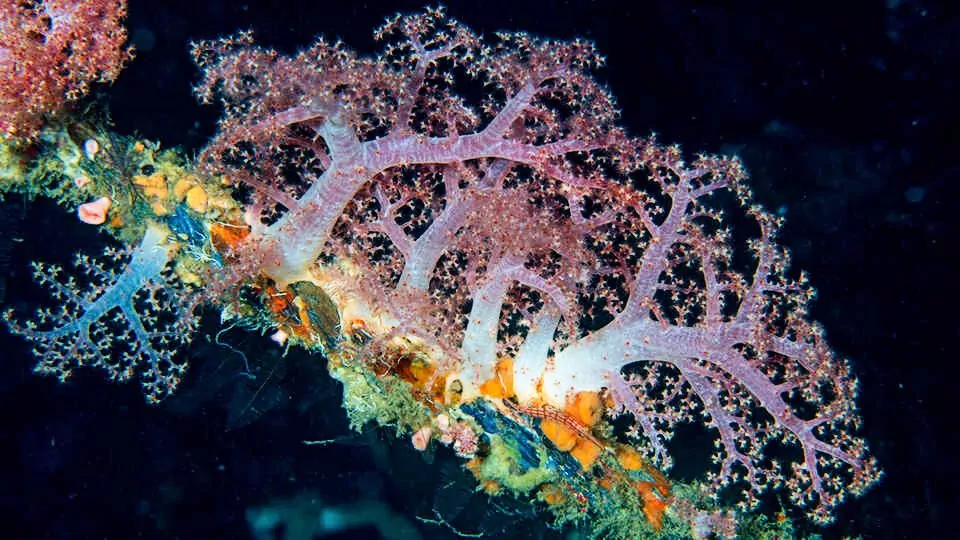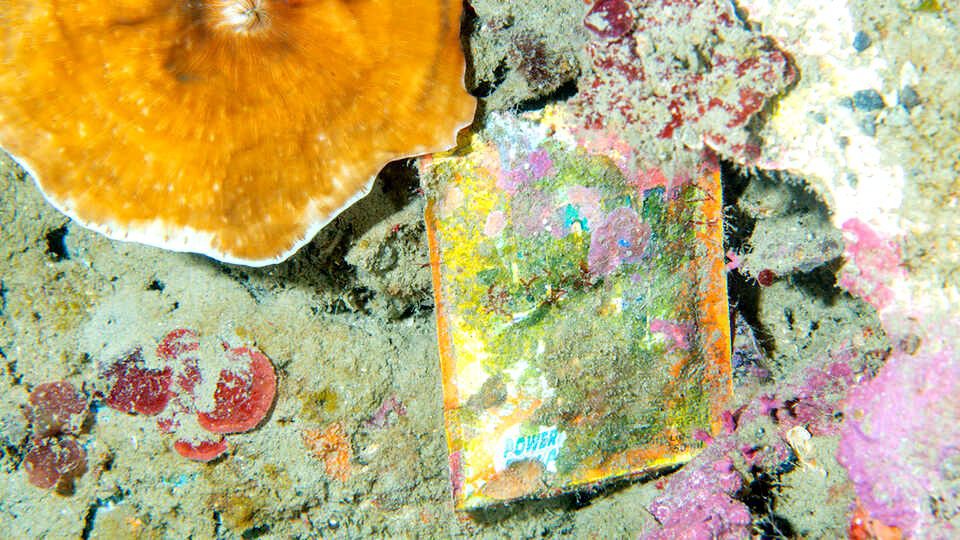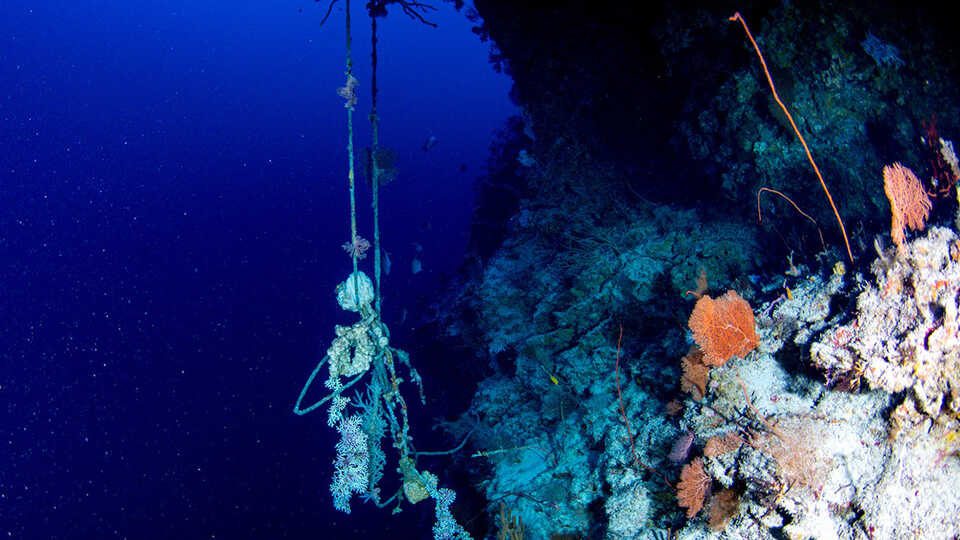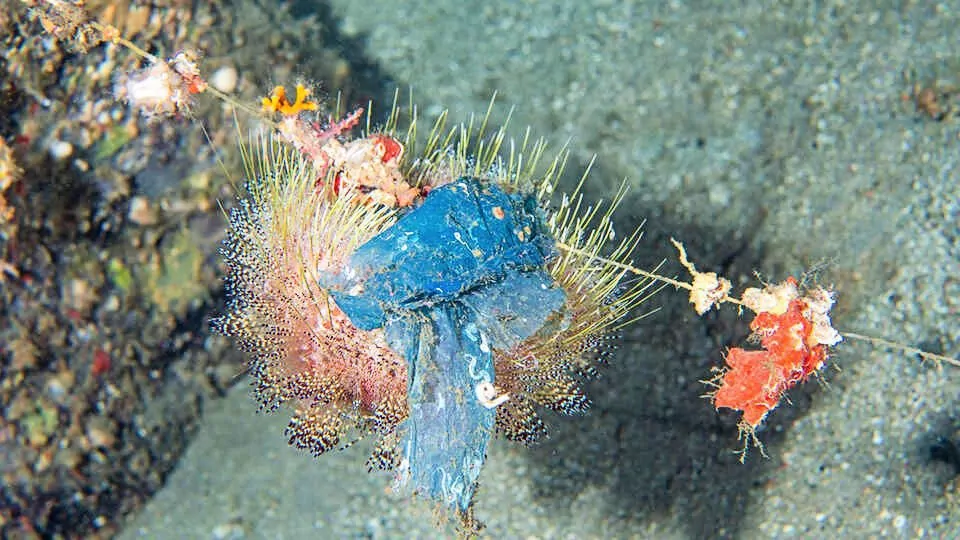Plastics pollution on coral reefs increases with depth, derives mostly from fishing activities and gets even worse around Marine Protected Areas (MPAs). An international group of researchers have dived deep and extensively into the “twilight zone” to reach their surprising conclusions.
Also read: Ghost Fishing UK divers on Shetland net mission
The scientists say that the resulting survey of plastic pollution on coral reefs is the most comprehensive yet, and that some promising strategies to help protect reefs have emerged from it.
The team of researchers from the California Academy of Sciences (CAS), the Universities of Oxford, Exeter and São Paulo and other bodies conducted more than 1,200 underwater visual surveys across 84 reef ecosystems at a range of depths in 14 countries with Indian, Pacific and Atlantic Ocean coasts. Their aim was to establish the abundance, distribution and drivers of plastic pollution at a range of depths.

To survey mesophotic coral reefs (from 30-150m deep), the researchers used technical scuba-diving equipment to count debris along 20m transects, or analysed footage captured by ROVs and manned submersibles.
They found that coral reefs appeared to be more contaminated by plastics and other human-derived debris than other marine ecosystems that have been evaluated in the past, even though far less polluted than ecosystems such as beaches and wetlands.
Unlike those near-shore environments, however, the amounts of plastics on coral reefs were found to increase with depth, peaking in the mesophotic zone and mostly derived from fishing activities. Macroplastics larger than about 5cm made up 88% of the total debris.

Trash on every dive
“It was surprising to find that debris increased with depth, since deeper reefs in general are farther from sources of plastic pollution,” said Dr Luiz Rocha, CAS curator of ichthyology, co-director of the academy’s Hope for Reefs initiative and the study’s senior author.
“We are almost always the first humans to set eyes on these deeper reefs, and yet we see human-produced trash on every dive. It really puts the effect we have had on the planet into perspective.”
Potential reasons for the deep pollution include waves and near-surface turbulence dislodging human-made debris and carrying it away; recreational divers cleaning the more accessible shallow reefs; and faster-developing shallow corals growing over and concealing items of rubbish.
Human-made debris was found in 77 of the 84 locations – even remote reefs off uninhabited islands in the central Pacific, although the lowest densities, at around 580 items per sq km, were observed in locations such as the Marshall Islands.
The Comoros islands off east Africa had the highest density of pollution with nearly 84,500 items per sq km, the equivalent of around 520 items of debris on a football field. Reefs off the Philippines and Brazil were also highly polluted.
“Our findings provide more evidence that the mesophotic is not a refuge for shallow reef species in a changing climate, as we once thought,” said co-author Bart Shepherd, director of the CAS’s Steinhart Aquarium and co-director of Hope for Reefs.
“The results of our global study shine a light on one of the many threats that deep reefs face today,” added Oxford marine biologist Paris Stefanoudis. “Because these ecosystems are ecologically and biologically unique, much like their shallow-water cousins, they need to be conserved and explicitly considered in management plans.”
75% fishing plastics

While consumer debris such as water bottles and food wrappers were found, it was fishing nets, lines and ropes that made up almost 75% of all the plastics items documented.
“Fishing gear which, even as debris, continues to catch marine life through what we call ghost-fishing, appears to contribute a large proportion of the plastic seen on mesophotic reefs,” said co-author Prof Lucy Woodall, principal scientist of Nekton and an associate professor at Exeter.
“Unfortunately, fishing-gear debris is often not reduced by general waste management interventions; therefore specific solutions related to the needs of fishers should be considered, such as no-charge disposing of damaged gear in ports or individually labelling gear to ensure fishers take responsibility for misplaced equipment.”

Reef pollution also increased with proximity to densely populated cities and local markets – but also to MPAs. “Because marine protected areas often allow a certain amount of fishing within or near their borders and are typically more productive than other areas due to their protected status, they are often heavily frequented by fishers,” said Stefanoudis. “This may account for the increased amount of fishing-related debris in areas close to marine protected zones.”
In their conclusions, the team emphasise the urgent need to expand the depth of MPAs to include mesophotic reefs, update international agreements on combating plastic pollution to include fishing-gear, and develop low-cost biodegradable alternatives to fishing gear.
“If we act fast and employ science-based solutions, there absolutely is hope for coral reefs,” said the CAS’s Shepherd. The paper has just been published in Nature.
Also on Divernet: Mmm, tastes good – why corals like plastics, Oceanic bacteria glue plastics together, Plastics threat to filter-feeders, Plastics mar hermit crab home-making

